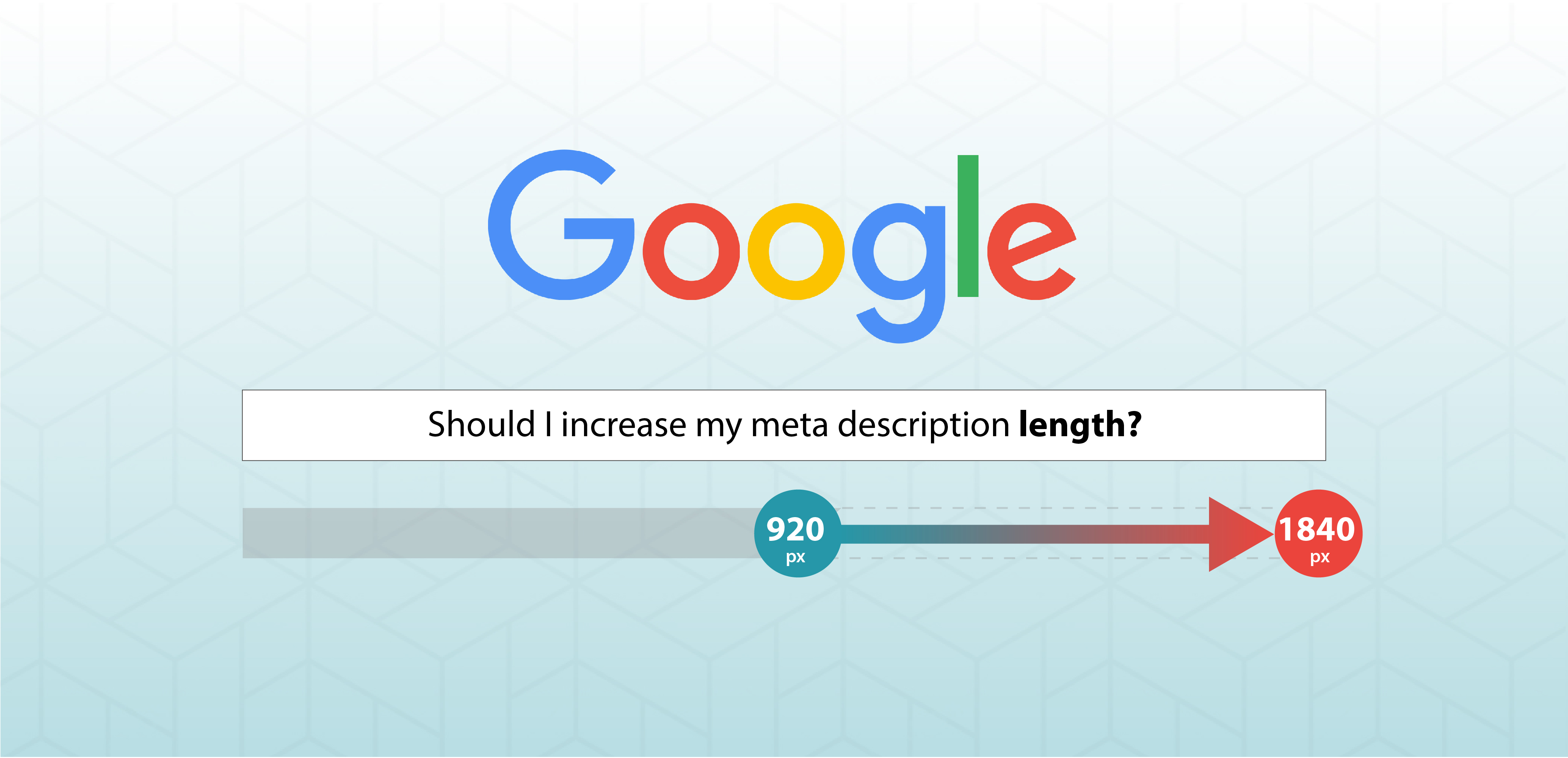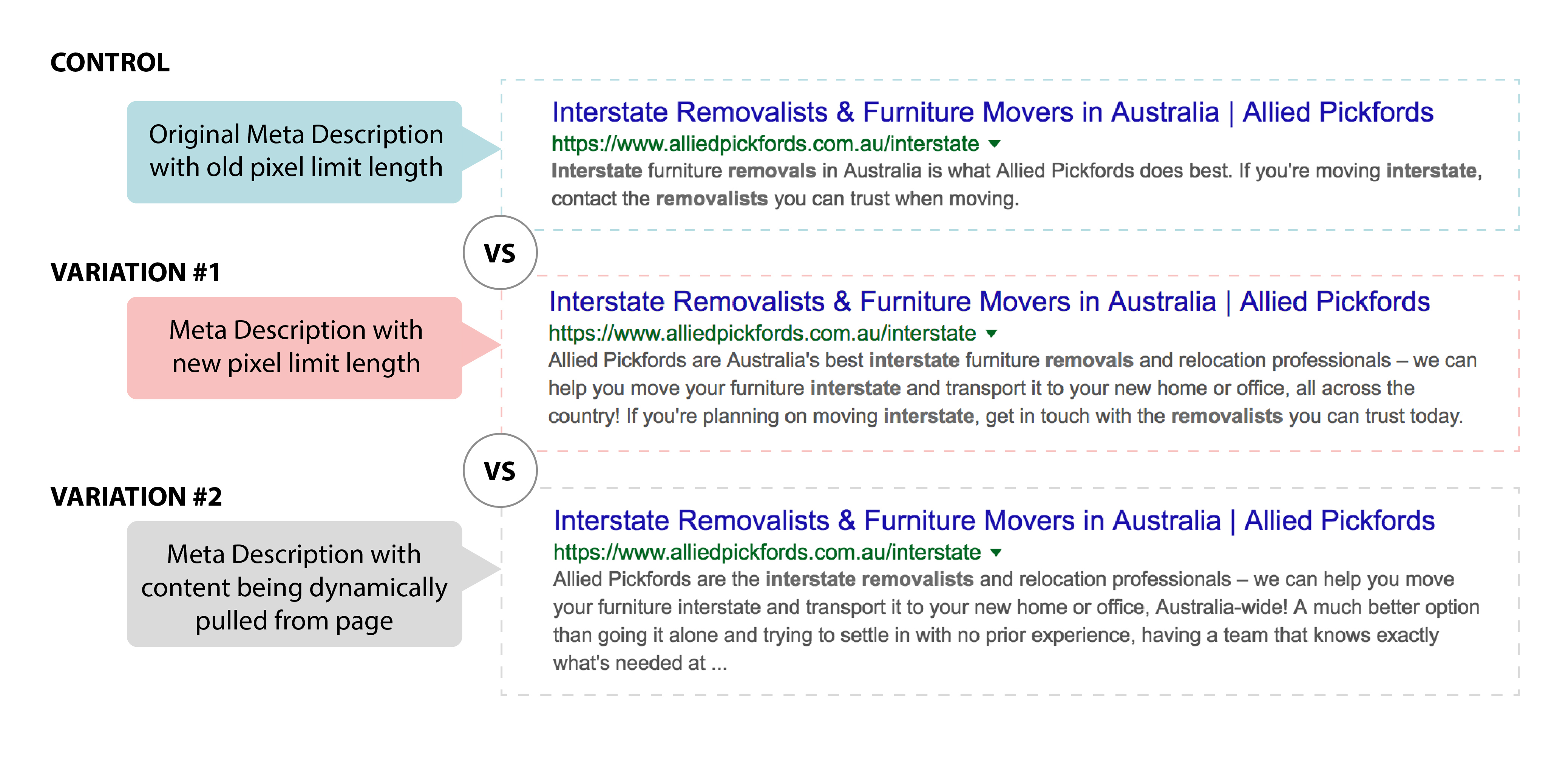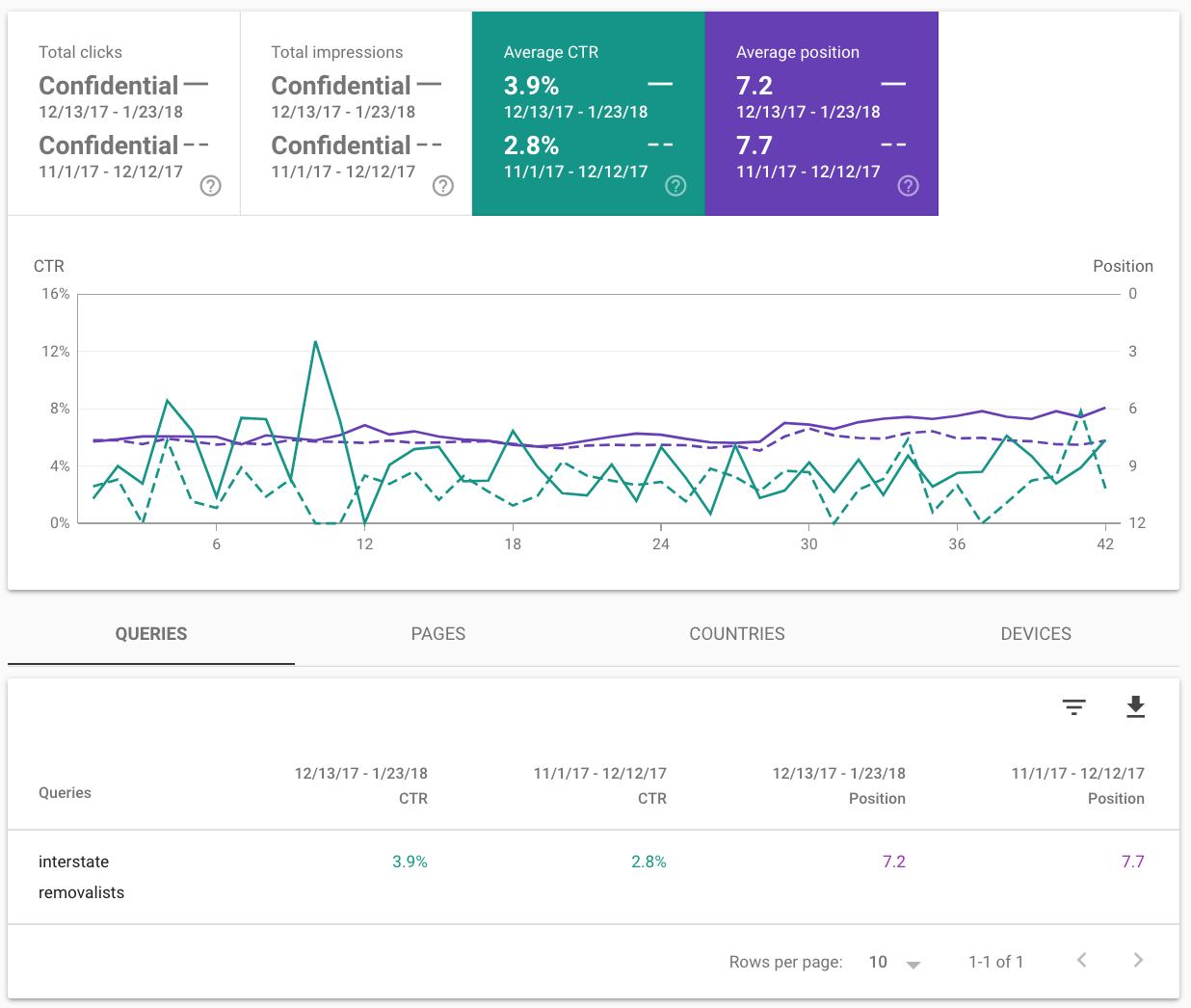Should we or shouldn’t we update our Meta Descriptions?
This seems to be the question on the minds of the whole SEO industry right now.
Every good SEO Manager has the best of intentions for their clients. And we only want to make changes when we know that there is going to be a measurable impact.
Although there is one Google update that many are still unsure of the best way forward – and it is difficult to say with much certainty the correct answer. Meta Descriptions have gone from being ~920 px before truncation to ~1840 px, although it is not as black and white as it sounds.

Instead of just simply showing more text, Google has made it more of a ‘dynamic process’ where the landing page content will be displayed in some cases, rather than the text inputted within the following tag:
<meta name="description" content="text” />This begs the question; “What’s the point of setting your new Meta Description?”.
My thoughts on this almost lean to the fact that those who previously set their Meta Description correctly to the old limit of ~920 px are now disadvantaged.
Although this might just be the pessimist in me trying to come out...
For instance, if you had never set your Meta Description in the first place, you would now be displaying a longer snippet in SERPs (Search Engine Result Pages) while dynamically pulling the content from your landing page.
Whereas I am seeing time and time again, pages that still display as the previous length, and look naked in comparison. The truth is that Meta Data length (Title Tags and Meta Descriptions) have always been a contentious topic.
Personally, I tend to go for longer Title Tags and Meta Descriptions to really maximize the space within the Organic listings.
Let’s get into the experiment that you have come here to read all about.
Experiment Outline
Firstly, we will start with a clear hypothesis as every structured experiment should:
Increasing Meta Description length will result in a greater CTR from Google's SERPs. This is due to taking up more results page real estate, along with pushing the page below further down, resulting in a greater chance of being clicked.
I set out to do a small-scale Sequential Test of my own, with Meta Description length as the variable in question. Here is what the Control and *some of the Variations looked like:
Note: I say '*some of the Variations' because, at times, the search term is what determines what is shown.
 Meta Description Test Experiment Outline
Meta Description Test Experiment Outline
For Variation #1, this was the Meta Description that was set in the backend:

For Variation #2, this was the Meta Description that I found to be showing for the majority of the time (for the duration of the experiment). The snippet in this Variation is where the landing page content has been dynamically taken because Google deems it as the best answer to the query.
This experiment is particularly unconventional because if we were going to compare a Variation against the Control, we would need to focus on just one search term with considerable search volume.
The top search term that our landing page ranks in Google for is: 'interstate removalists'. According to the Adwords Keyword Planner tool, this keyword gets searched 6,600 times per month on average in Australia.
There are, however, several variables which will need to stay virtually unchanged. Otherwise, the results will not provide a statistically significant result:
Average Position: The average position of the landing page in Google's results will need to not fluctuate by more than 1 position. The number of clicks received depends greatly on the position, so we want to control this as much as possible. Search Results Structure: Depending on the search result, Google will often show map results at the top. For our example, the map results display at all times due to the intent of needing a local business for the service. Copywriting Ability: When creating the experiment outline, I wanted to keep the Control the same, and simply expand upon the length. This was however not possible due to the poor wording of the second sentence within the Meta Description: "If you're moving interstate, contact the removalists you can trust when moving."... I will, therefore, need to create a brand new snippet. Branded Searches: We can't use a page that gets a considerable amount of brand searches. This would mean if the page had a large portion of visitors arriving from a Google search using 'Allied Pickfords Interstate Removalists', then this would skew our results. This is because the click-throughs would depend on word of mouth factors, offline advertising, etc.I can say with some level of confidence that the key differentiator among Variation #1, Variation #2, and the Control is the length of the snippet itself.
The key indicator of performance is Click Through Rate (CTR) = Clicks / Impressions, which is the primary function of the Meta Description in Google’s SERPs.
Results
Interestingly, I found that Variation #2 was showing for the term ‘interstate removalists’ for the majority of the time:
 Dynamically Generated Meta Description
Dynamically Generated Meta Description
The experiment was run across 84 days in total, having 42 days of the Control compared to 42 days of Variation #2, with a difference in ranking of 0.5, according to Google Search Console (GSC).
Unfortunately, due to tight security precautions, I can't give the exact numbers for Clicks and Impressions (Allied Pickfords are one of the worlds largest mover companies). However, considering that the Average Position was ~7th and the search term 'interstate removalists' gets searched 6,600 times each month on average in Australia, you can estimate a sample size which will get you fairly close.
Here are the results:
 Google Search Console Beta Query Report
Google Search Console Beta Query Report
The difference in CTR for the 'interstate removalists' term increased from 2.8% to 3.9%, which is an approximate 36% improvement with the full-length Meta Description. Using a Bayesian A/B testing calculator, the Variation was the winner with a 99.85% probability based on the number of Clicks and Impressions.
Discussion
Although the sample size wasn’t enormous (i.e., statistical significance), I would still like to categorize this experiment as a success. And I would also like to employ someone out there to carry out this same experiment on a much larger scale (greater sample size, more pages, across different domains).
A major variable that could have caused some issues is the ‘Average Position’. If for instance, the position in SERPs increased/decreased dramatically, this would make the results far less reliable.
This is also a reason why we can’t compare results from this year to last year because the ranking is considerably better. Even though we are testing a distinct Control against a Variation.
There are plenty of interpretations that could be made using this data, although let’s stick to proving the original goal: “What’s the point of setting your Meta Description”.
The point is that your previous Meta Description is now too short with the changes that Google has rolled out.
And I’m not sure why Google continues to show the shorter lengths for old Meta Descriptions, although once you have updated your snippet, it then becomes a dynamic process…
This seems a little counterintuitive, although perhaps the reasoning is not to startle those who had optimized their Meta Descriptions in the past.
I would be curious to know that if I had just removed the Control Meta Description completely (content would be dynamically inserted to the new px limit), that the results of this experiment overall would have been just as positive.
Key Takeaways
While performing this experiment, I noticed that if you set your Meta Description on the home page of your site (which will generally show 100% of the time for brand searches), you can have a good amount of control over the text that displays:
 Home Page Meta Description
Home Page Meta Description
My goal here is to have some competition with Adwords, by attempting to capture more brand search clicks from the Ad that tends to be directly above.
Now that I have taken a bit of a tangent let’s get back to the core experiment.
The key takeaway is that a longer Meta Description that even has truncation at the end, i.e., “...” and takes up the entire pixel limit set by Google, has resulted in a 36% higher CTR in the study I have conducted.
Knowing this, I will most definitely be running similar tests with other clients. The key as with any experiment is to focus on higher sample sizes for statistical significance.
With that in mind, I am going to be updating the home page Meta Description for all clients, and also any top performing organic landing pages that are already ranking well.
Also, if I were to write a Meta Description from scratch going forward, I believe the best way will be to use the new longer pixel limit specifications.
It seems like any case study within the SEO realm gets looked at in extra close detail by the community – so just for the record, I understand this and welcome any feedback! :)
Thanks for reading and I hope this gave you some confidence in going ahead with your updates.
Innovative SEO services
SEO is a patience game; no secret there. We`ll work with you to develop a Search strategy focused on producing increased traffic rankings in as early as 3-months.
A proven Allinclusive. SEO services for measuring, executing, and optimizing for Search Engine success. We say what we do and do what we say.
Our company as Semrush Agency Partner has designed a search engine optimization service that is both ethical and result-driven. We use the latest tools, strategies, and trends to help you move up in the search engines for the right keywords to get noticed by the right audience.
Today, you can schedule a Discovery call with us about your company needs.
Source:




![15 Most Challenging Tasks of Content Marketers [Semrush & CMI Joint Study 2018]](https://allinclusive.agency/uploads/images/15-most-challenging-tasks-of-content-marketers-semrush-amp-cmi-joint-study-2018.svg)
